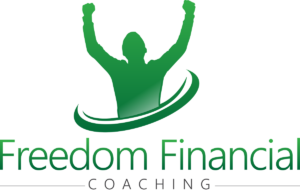Money – the biggest power tool of all
When I was a kid, my dad had a skilsaw. Anytime he used it, he made sure we stayed far away so we wouldn’t get hit by flying debris or get a hand close to the blade by accident. He knew how powerful that tool was and how much damage it could do if it was used incorrectly. It wasn’t until I was much older that I was able to use it, and then only after I had instruction. The same went for tools like table saws and drills.
Today, I hold the same concern with my own kids around tools. My oldest daughter loves to help and more than once I’ve had to caution against picking up a hammer or drill laying around while I was working. I’m still extremely careful using saws and hammers, knowing that one wrong move could cause injury. And I dare not let someone use those tools that doesn’t understand the proper method and care needed.
Most tools, whether they’re operated by batteries, power or brute force, can be dangerous in the wrong hands. Saws can cut off fingers, hands and toes. Hammers can smash a thumb. Severe injury and lasting damage can occur when operators don’t follow instructions or don’t take the proper precautions.
The same is true about money.
Money is a POWERFUL tool. Money has the ability to change lives…or ruin them. Money has the ability to make your dreams come true…or crush them. Money is a tool that causes great things to happen…or creates devastation and turmoil. It all depends on how it’s used.
You might that sounds over the top, and on surface level it is. But let’s take a closer look at how people can bring great rewards, or inflict lasting damage, with their money decisions.

From a basic level, spending money on eating out multiple times a week doesn’t seem harmful. Until you calculate how much more you spend compared to buying groceries and saving for a vacation. The same can be said for subscribing to magazines, clubs or media streaming services rather than planning for clothes and shoes for kids and the ever-surprising Christmas gift.
Now let’s take it a step further. You could buy a brand-new car and feel good about the safety, fuel economy and comfort you provide your family. But the value of the car will drop more than half in the first four years. That means your $30,000 car is now worth less than $15,000. And unless you paid cash, I’m guessing you’re probably going to pay over $4,000 in interest in a five year loan. That means you’ve spent more on the car than it’s even worth…
Of course if you decide to buy a good, used car with cash, you can likely negotiate a couple thousand off the asking price and get in a nice set of wheels for $10-15,000. Not only will the depreciation not be as rapid, but you can take the remaining $20,000 you would’ve spent in car payments and invest that into mutual funds for your next car. $333/month for five years at average 10% interest equals over $25,000. If you’re really competitive, you can sell your old car for $7-10,000 and have a total of $32-35,000 cash for a vehicle. But you know the value of your money now, so why spend more than $15-20,000? As the snowball continues to roll, before long you can let your car fund generate its own payments through compound interest. And that’s the power of money!
Unfortunately, most people base their decisions on what they want now, rather than what they could have later. Immediate gratification overpowers delayed satisfaction. You never get ahead because you’re always running behind. And in the end, all you have to show for your time, energy and effort is a list of wishes and dreams that never had a chance to become reality.
Money isn’t evil, money isn’t threatening, and money isn’t bad. Money is a tool. A tool that can build greatness and provide freedom, or a tool that can be wasted and leave you with nothing but dreams to pass on. The choice is yours.
If you want operating instructions for how to make this tool work to your advantage, schedule a free consultation and get your personal manual. I’ll even charge the batteries 🙂
